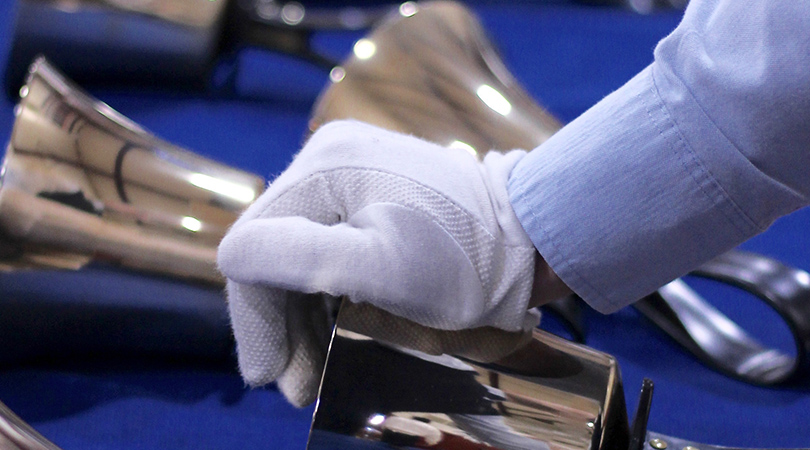A handbell choir, ensemble, or team performs music on a set of handheld bells tuned to the chromatic scale. An entire handbell choir is itself a single instrument, with a musician responsible for only one or a very few select notes that, when played together with other musicians, becomes rich melodies and harmonies. This is unique from other orchestras or bands, where an individual musician is responsible for a continuous line of music. Handbell choirs may be composed of a dozen or more musicians, playing any number of bells to scale two octaves (25 bells) and up to eight octaves (97 bells).
With only two hands (and one or two bells in each), a ringer is generally only responsible for two or four notes and their associated sharps/flats. Relying on multiple ringers to play only single notes in a continuous line of music is a challenging aspect of handbell ringing, particularly in creating a sense of continuity and flow. Group practice is therefore an essential component of handbell ringing. If a person fails to show or find a substitute, their notes will be missing from the music.
The smaller the bell, the higher the pitch. The larger the bell, the lower the pitch. Each handbell is cast in bronze (an alloy of copper and tin), rigged with a hinged clapper on a single plane (they only move side-to-side), and fitted with a leather or vinyl handle. A handbell is rung by grasping the handle and moving the wrist, causing the clapper to tap the inside of the bell before springing back into place. Each bell is marked with the musical note on the handle. Foam-layered tables allow handbell ringers to rest the bells on a smooth surface without chipping or damaging the bell – the foam also prevents unwanted extra “notes” each time a bell is set down.
A start in change ringing
Modern handbell choirs owe their start to groups of tower bell change ringers who, for the peace of the village, couldn’t frequently practice within bell towers. Small handbells, corresponding to the larger tower bells, were thus developed to hone the ringers’ craft and rehearse complicated permutations within a comfortable, quiet environment. After all, a bell tower can be quite cold and drafty.
The idea of ringing handbells quickly devolved from change ringing and became an art form all its own, made popular within church services and open air community performances. As handbell techniques became more sophisticated, larger sets of handbells were cast with precision tuning, allowing for greater ranges, subtler artistic interpretations, and an independent repertoire of handbell music.





